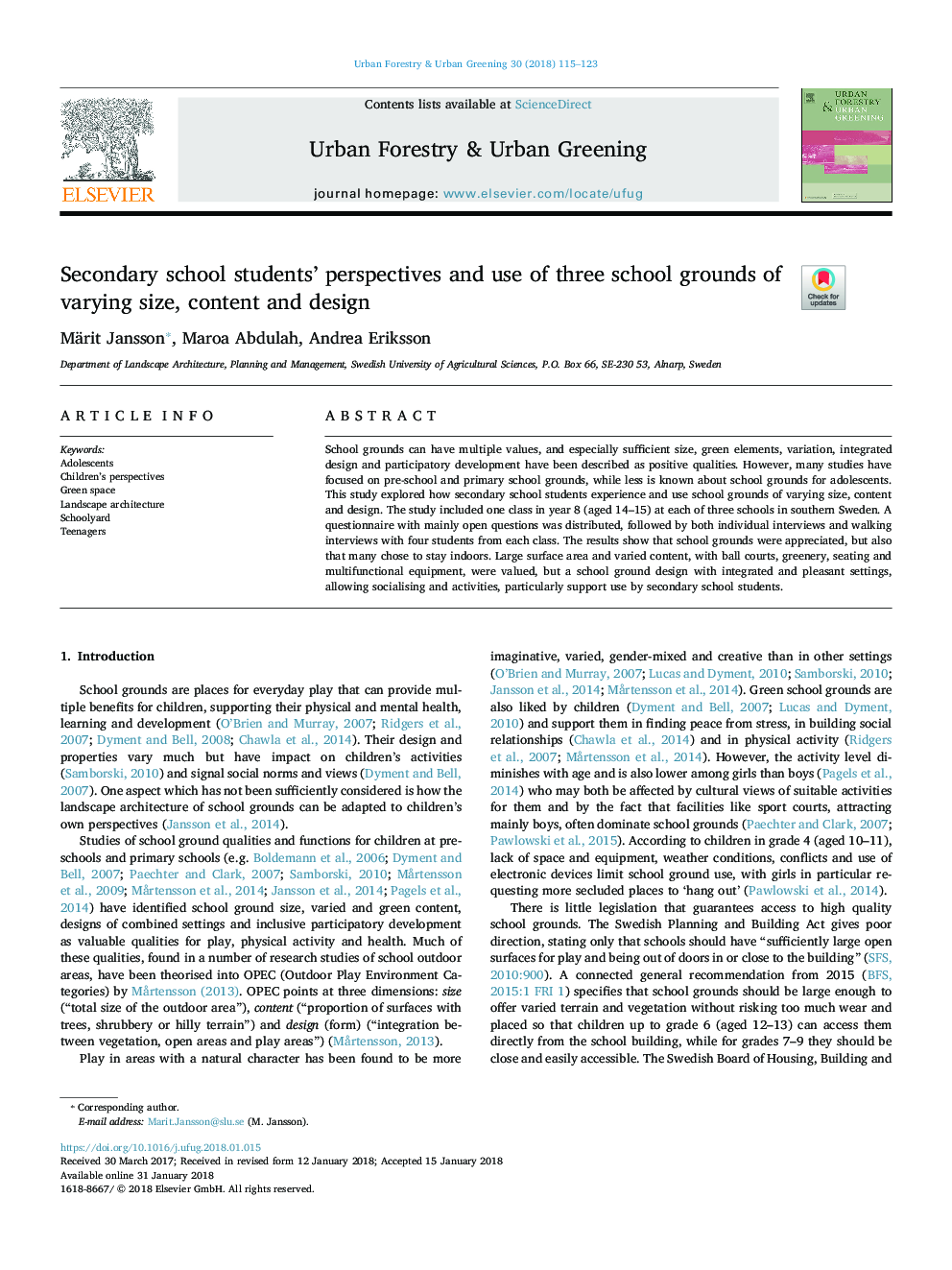| Article ID | Journal | Published Year | Pages | File Type |
|---|---|---|---|---|
| 6549397 | Urban Forestry & Urban Greening | 2018 | 9 Pages |
Abstract
School grounds can have multiple values, and especially sufficient size, green elements, variation, integrated design and participatory development have been described as positive qualities. However, many studies have focused on pre-school and primary school grounds, while less is known about school grounds for adolescents. This study explored how secondary school students experience and use school grounds of varying size, content and design. The study included one class in year 8 (aged 14-15) at each of three schools in southern Sweden. A questionnaire with mainly open questions was distributed, followed by both individual interviews and walking interviews with four students from each class. The results show that school grounds were appreciated, but also that many chose to stay indoors. Large surface area and varied content, with ball courts, greenery, seating and multifunctional equipment, were valued, but a school ground design with integrated and pleasant settings, allowing socialising and activities, particularly support use by secondary school students.
Related Topics
Life Sciences
Agricultural and Biological Sciences
Forestry
Authors
Märit Jansson, Maroa Abdulah, Andrea Eriksson,
